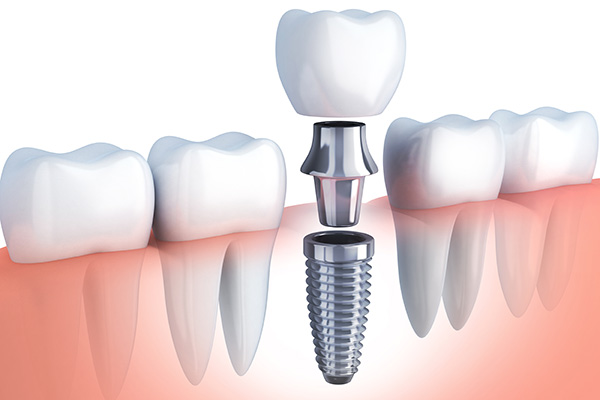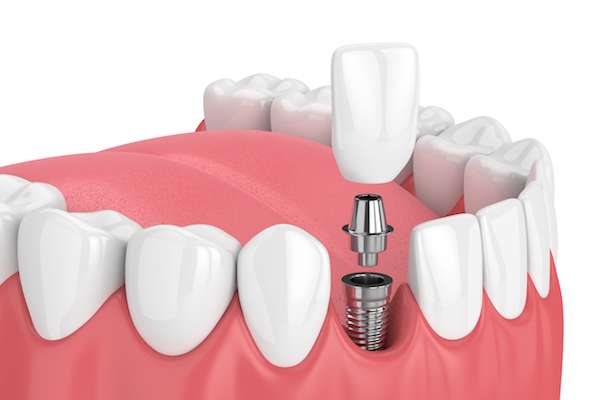The Truth Behind Root Canals Cumming, GA
Many people seem to have a phobia of dental care and the variety of procedures in which they believe that professional dental care will be painful. In reality, most dental visits are not nearly as painful as people fear. The truth is that the patient will feel more pain if he or she avoids seeking professional treatment. Regardless, there is one procedure that people seem to fear above the rest: the root canal.
The Need for a Root Canal Procedure
The root canal is a crucial procedure for removing infected dental pulp from within a tooth. Beneath the outer shell of the tooth, known as the enamel, is the dentin and then the dental pulp. The dental pulp contains the blood vessels and nerves within each tooth. If the dental pulp becomes infected, then the patient will begin to experience incredible amounts of pain.
Thus, a root canal procedure is necessary to remove the dental pulp and ensure the infection has not spread to other areas of the mouth. In fact, a regular dentist may not be enough to treat the root canal and the patient may need to see an endodontist. An endodontist is a dentist who specializes in maintaining teeth by treating the soft inner tissue of the teeth.
People may even avoid seeking proper treatment due to believing these myths about root canals. There are several myths about root canals that people still believe. Below are the myths and the truths behind each of them.
#1. Root canals are painful
The truth is that root canals are not painful like people believe. Most professional endodontists will use anesthesia to numb the area of the procedure and help the patient relax. Thanks to the anesthesia, the patient will not feel any pain during the procedure and the endodontist can proceed without issue.
Following the procedure, the patient may feel some level of soreness, but will be able to treat the soreness with pain killers or stronger medication the endodontist recommends.
#2. I will be unable to eat hard foods after a root canal procedure
Actually, a root canal will not prevent you from ever consuming your favorite foods again. With the root canal procedure, you will no longer feel pain since the procedure removes the nerve of the tooth. Once the endodontist covers the tooth back up, you will actually have less feeling within that tooth than before.
Immediately following the procedure, there may be a few days in which you need to eat carefully and avoid biting directly on hard foods with the tooth. However, after this period, you will be able to eat what you want when you want. While a dental crown that covers the tooth may require maintenance from time to time, you will be able to continue eating and living on your regular schedule.
#3. Root canals require the dentist to remove the entire tooth
This is false. In reality, we want to keep the natural teeth in the best shape possible and only recommend a complete extraction when it is completely necessary. Thus, an endodontist will use a root canal to remove the infected portion of the tooth and cover the tooth back up to ensure that the infection does not spread.
There is no reason to remove the entire tooth unless the infection consumes the tooth beyond repair and is spreading to other teeth. This is why we recommend that people seek treatment from an endodontist as soon as possible.
#4. Root canals cause illnesses in the patient
While some people may believe that root canals make you more susceptible to illnesses and disease, it is not true. There is no evidence that states this fact that professionals did not debunk. The truth is that you are more likely to get sick from leaving the infection in the tooth and not seeking a root canal procedure. If the infection is in an upper tooth and it spreads through the sinuses, a patient can die if he or she does not seek treatment.
With proper dental hygiene and regular checkups, we can help to keep your teeth healthy. In the case of a serious dental infection, an endodontist can help effectively remove the infection without having to remove the entire tooth.
#5. Root canals will take multiple appointments
While an endodontist may need two appointments, one to identify that a root canal is necessary and one to perform the root canal, a root canal will not require multiple visits. If the patient schedules an emergency appointment due to unbearable pain, then the endodontist will do everything possible to treat the tooth immediately.
If the patient needs more intensive endodontic surgery, then the endodontist will schedule a second appointment specifically for the surgery. It is understandable that people have busy schedules, but it will be extremely difficult to function each day with a dental infection.
Check out what others are saying about our dental services on Google: The Truth Behind Root Canals Cumming
Questions Answered on This Page
Q. Does a root canal remove the entire tooth?
Q. How many appointments will the root canal take?
People Also Ask
Q. What is the root canal process like?
Definition of Endodontic Terminology
- Cementum
- Cementum is that bone-like tissue that forms the outer surface on the root of the tooth.
- Dental Pulp
- Dental pulp is the inner-most layer of the tooth with connective tissue that contains blood vessels and nerve tissue.
- Dentin
- Dentin is the inner layer of the tooth structure that is immediately under the enamel and surrounds the dental pulp.
- Direct Pulp Cap
- A direct pulp cap is a procedure in which a professional treats exposed pulp with a therapeutic material to help the tooth heal.
- Enamel
- The enamel is the hard calcified layer that covers the entire tooth and is subject to interaction with multiple substances.
- Endodontist
- An endodontist is a specialist who focuses on treating issues, diseases and conditions that affect the inner-most layer of the tooth, the dental pulp.
- Pulpectomy
- A pulpectomy is a procedure that involves the complete removal of pulp tissue from the root canal in a tooth.
- Pulpitis
- Pulpitis is another term to describe the inflammation of the dental pulp due to an injury or infection.
- Pulpotomy
- A pulpotomy is a procedure involving the removal of a portion of diseased or infected pulp in order to protect the healthy portions of the pulp and teeth still in the mouth.
Back to top of The Truth Behind Root Canals




